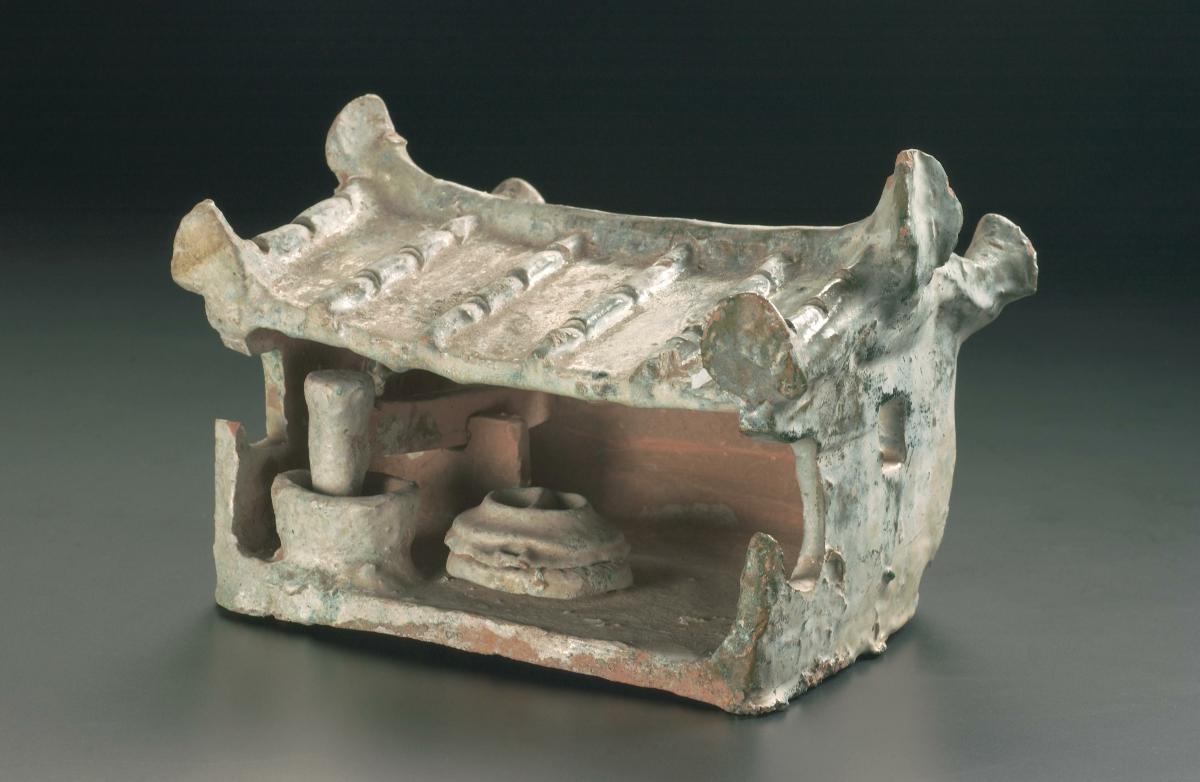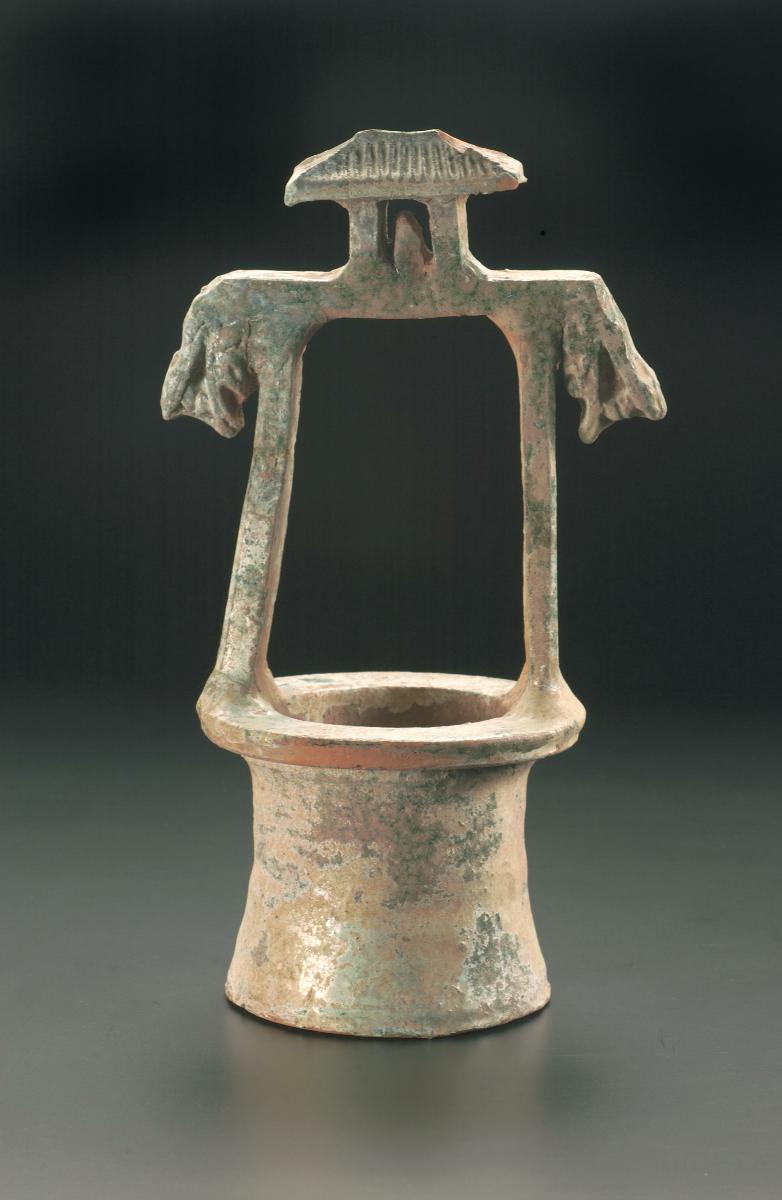This green-glazed red pottery model of a milling shed contains a mill and a treadle-operated tilt hammer. The shed has a gable roof with upturned eaves and finials at each end of the ridge. The end walls curve outwards on each side. This model simulates actual wooden buildings in the Han period (206 BCE- 220 CE) and is a burial ware. The custom of making burial ware or ‘mingqi’ was an ancient one. It is thought these structures were intended to supply the spirit of the deceased with familiar accommodation in the afterlife. Elaborate groups of burial wares were also a display of wealth and social status. None of the Han architecture has survived as they were made out of wood and such architectural pottery models provide excellent material for the study of Han architecture.















